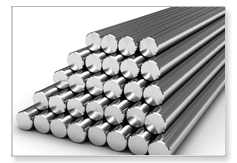Stainless Steel 316

Stainless Steel 316
These steels are the second most regularly specified stainless steels after Type 304 and are part of the SAE defined 300 Series which encompasses a range of austenitic chromium-nickel alloys. Austenitic stainless steels like Type 316 are widely available, have good general corrosion resistance, good cryogenic toughness, and excellent formability and weldability.
Type 316 has 2-3% Molybdenum included in its chemical composition which prevents specific forms of corrosion and generally enhances its corrosion resistance. Type 316 is often referred to as “marine grade” stainless due to its increased resistance to chloride corrosion compared to Type 304 making it a very suitable material for use in salt water environments.
Type 316L is a variant of Type 316 and differs by having a lower Carbon content as well as slightly lower yield and tensile strengths. Type 316L offers improved weldability and also reduces the possibility of lower corrosion resistance around welded areas.
As with most steel plate products a number of different designations are used for these steels. The most common are:
Type 316 1.4401 (EN Steel Number) S31600 (UNS)
Type 316L 1.4404 (EN Steel Number) S31603 (UNS)
Typical industrial sectors:
Brewing
Chemical Industry
Dairy
Food processing
Marine equipment
Petrochemicals
Pharmaceuticals
Typical product applications:
Condensers
Heat Exchangers
Filters
Pressure Vessels
Valves
Flanges and Fittings
Key Properties
These properties are specified for flat rolled product (plate, sheet and coil) in ASTM A240/A240M. Similar but not necessarily identical properties are specified for other products such as pipe and bar in their respective specifications.
Send Enquiry


